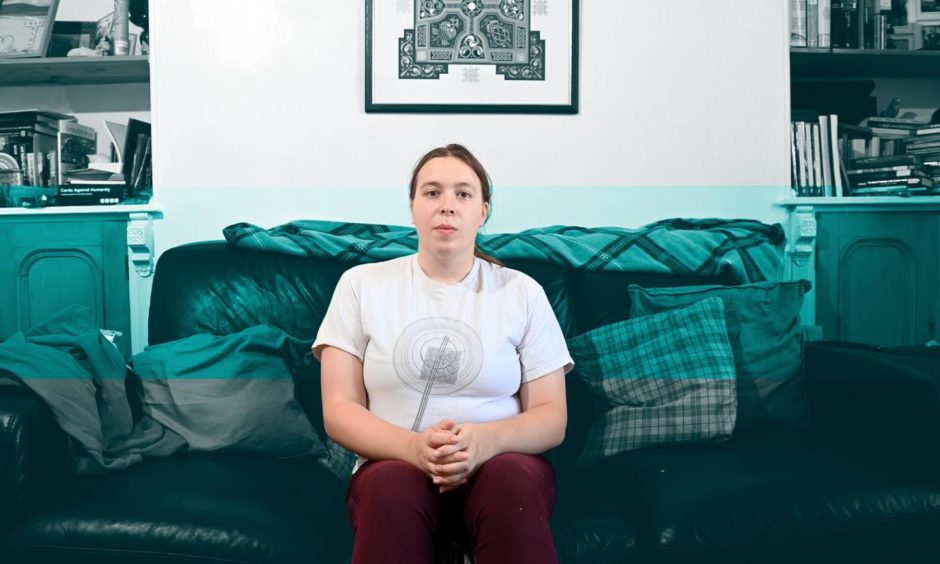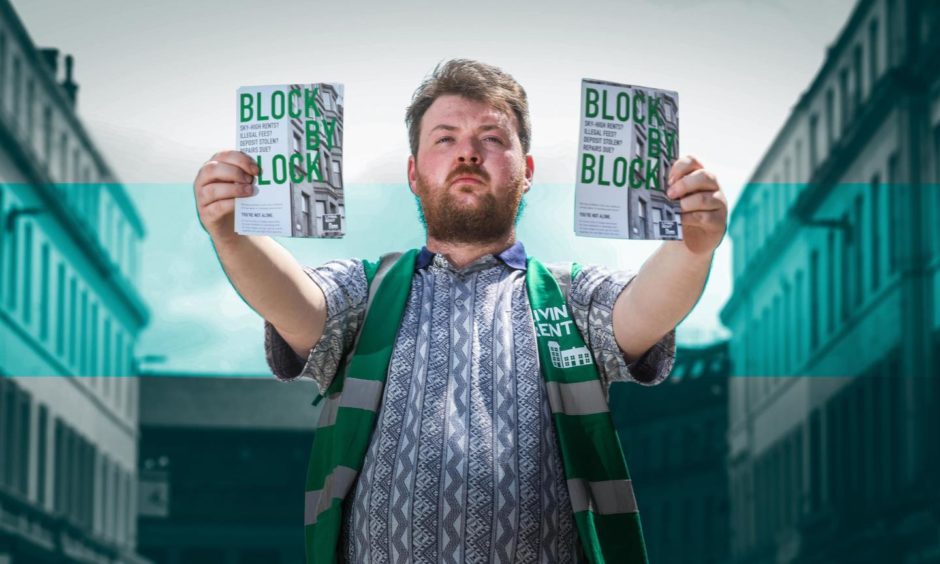The Covid-19 pandemic has changed the way we live – and for some that means where we live.
This change in attitudes has only exacerbated the legacy issues affecting housing in Scotland.
For a lot of renters and first-time buyers, the pandemic property boom spells doom and gloom.
In this investigation we speak to those who find themselves stuck renting in Scotland and the problems they face – short-term lets, sham lets, poor conditions and a government rent control scheme which has never been utilised four years on from its inception.
We talk to full-time workers who can’t save for a deposit amid the ever-increasing cost of rent and students who fear they will be priced out of the market in the future as they see house prices continue to rise.
We also speak to the sales and letting agents who can see the problems arising from the current red hot market for those trying to get their foot on the property ladder.
The hidden homeless of the Highlands
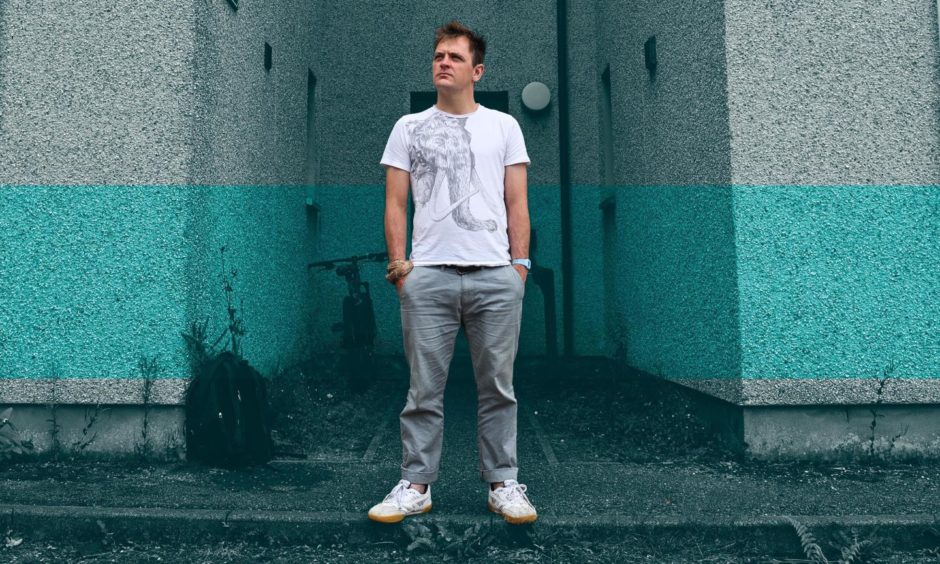
In the Highlands the rise of second homes, holiday lets and short-term lets have left some fearing the worst for the future of their local communities.
John Woods, 37, works in a school and has been living and renting in Ullapool for seven years. In that time he has lived in eight different properties.
In such rural communities, rental properties are precarious and John believes there is a hidden homeless problem in the Highlands.
He claims those in between lets are often left to find temporary accommodation in tents, caravans or friends’ couches – he himself has been forced into the latter.
“The amount of holiday homes means there’s very little stock available for rent. Holiday homes and short term lets and the demand for people who want to come and live here.
“More and more people want to come and live here, especially after the pandemic. They think it’s a bit safer, bigger gardens, less congested, so many people want to come and live in the Highlands.
“The demand for houses is quite high but the rate of new builds can’t keep up with demand. More and more of the housing stock is getting eaten up with holiday homes and short term lets.”
The intense demand for accommodation means best practices are not always followed or accommodation is extremely temporary. People can often find themselves in winter lets where they get a flat for a few months over the down season and are then asked to move on.
The holiday let contract hoax
Another issue creeping into the Highlands is ‘sham lets’. This is where home-owners and landlords advertise long-term accommodation but under holiday let contracts which are subject to far less regulations, including around deposits and evictions.
Some sham lets can be found on websites like Airbnb and Gumtree where unsuspecting and desperate tenants can get caught out.
Living Rent, Scotland’s tenant union, claimed in one report that in the 12 months from 2017 – 2018 the number of Airbnbs in the Highlands rose by around 80% – and this figure doesn’t take into account other forms of holiday lets.
In 2019, the tenants’ union successfully took Edinburgh landlord Mark Fortune to court where he was ordered to pay £7,500 for his use of sham holiday let contracts in the first legal win of its kind.
The £7,500 fine was the maximum amount possible after Fortune failed to protect his tenants’ deposits, claiming they had signed holiday let contracts.
John is of the firm belief that short-term lets and second homes are becoming more of an issue in Ullapool and the Highlands in general.
“Sometimes you get asked to leave (your accommodation) because the landlord wants to convert it into short-term lets.
“There’s a lot of cases of this happening, especially over the pandemic where the opportunity to make money with short term lets were destroyed so lots of people decided to put their properties onto the rental market.
“Once lockdown lifted people wanted to put their house back on the market for short term lets and that would mean evicting tenants that are in there at the moment.
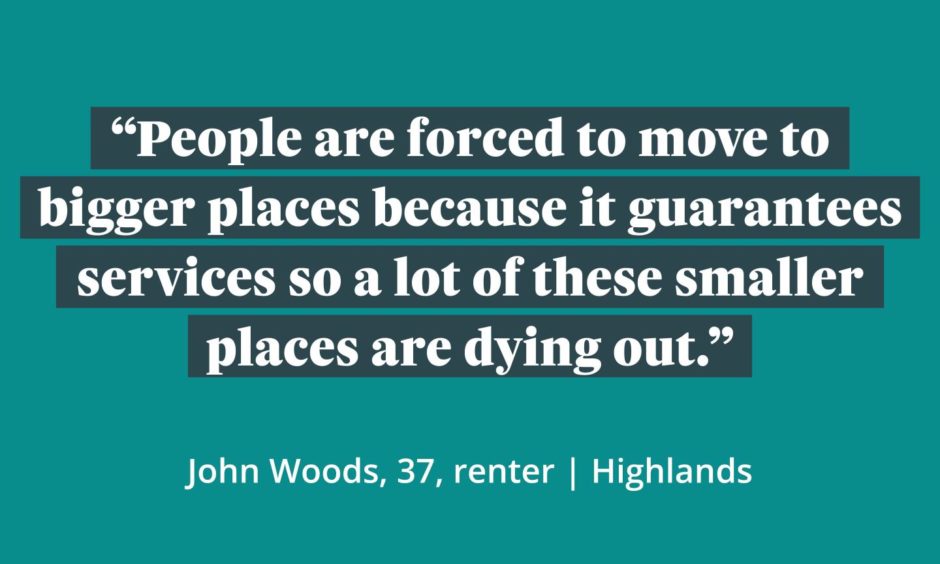 “They (the evicted tenant) end up staying, and this is actually happening, people staying in tents, couches, caravans. There’s a lot of homeless going under the radar.
“They (the evicted tenant) end up staying, and this is actually happening, people staying in tents, couches, caravans. There’s a lot of homeless going under the radar.
“The evidence is anecdotal but anyone that has stayed here for a wee while, we’ve all had to stay in temporary accommodation with a friend, on a couch, for a wee while, just something in between, while you get a place to stay.”
‘Smaller places are dying out’
On top of making life hard for renting tenants, John also fears the short term lets path is also damaging the community.
He said: “The Highlands is a massive area and problems can be quite localised and different, but if you’ve not got anyone staying there then there’s no-one using leisure centres, or no-one using libraries, so it becomes easier to justify closing them.
“That means the people that are (living) there are missing out. It means that people are forced to move to bigger places because it guarantees services so a lot of these smaller places are dying out.
“I work in a school, there’s only four children in this school of different ages, and right next to the school there was a house being built and we thought it was exciting because we thought a family was going to be moving here, more friends in the school, more life in the area.
“Then the house was built and it was a holiday home.”
The long-term renter has called for more “genuinely” affordable homes to be built, but also wants strict regulations to curb holiday lets and rent control measures brought in.
Dan Wilson Craw, deputy director of Generation Rent, has sympathy for the situation being suffered in the Highlands, claiming that wealth disparity was becoming a growing problem when it came to basic needs like housing.
“Just as the wealth divide in this country has gotten wider, more people have more money to spend.
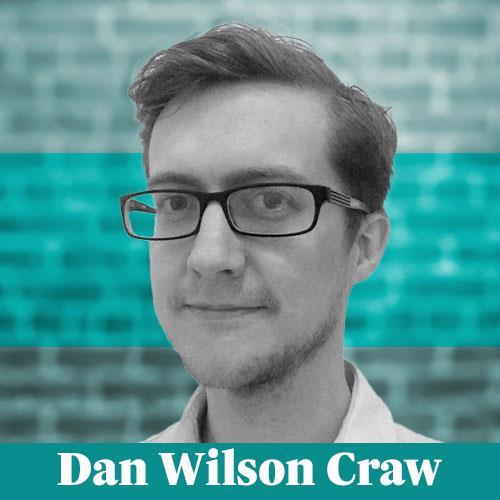
“That means they’ll look at getting a second home.
“The fact is that it is really easy to put properties on the holiday let market as well.
“In a lot of places, particularly in Scotland around Edinburgh, The Highlands, The Hebrides, there’s a lot of homes which would have been lived in 10 years ago but they are now second homes or holiday lets and that’s denying a lot of people somewhere to live and that’s pushing up rents as well.
“It’s all part of the same mix. Airbnb is the biggest one, the most disruptive one certainly.
“When you’ve got an Airbnb that’s essentially one property that’s been taken out of the homes market.”
‘I would struggle to get a deposit’
These catalogue of issues are driving up house prices, pricing people like John out of owning a property.
In addition to the normal challenges facing renters and hopeful buyers in rural holiday destinations, they are now also competing against a new problem since the pandemic – folk selling up in wealthy urban areas and moving to the country.
John said: “If you’re renting you pay far more of your income towards household costs than you would if you were buying.
“So it makes a lot of sense to buy – but prices are too high.
“I have a small amount of savings but I would struggle to get a deposit. The prices of houses in the area – because of the attractiveness of the area post-lockdown – people are selling up down south, maybe the central belt or England.
“They are paying £20,000 – £30,000 over the asking price and pricing people out who live here.”
Long-term vacant properties
While building more affordable houses seems like one obvious step in achieving that goal, there are other factors at play.
The Airbnb and holiday lets market has taken huge swathes of properties out of the reach of potential buyers and renters.
Long-term vacant properties is another massive strain. A study by Admiral released in 2021 shows that Scotland had £8.1 billion’s worth of property lying empty in 2020 for at least a six month period.
Around 3,500 properties had been deserted for more than eleven years.
With 19 homes in every 1,000 unoccupied, Scotland has the biggest problem within the UK. Of the 25 Scottish local authorities that took part in the survey; Shetland, Western Isles, Aberdeen, Aberdeenshire, Angus and Perth and Kinross all made the top ten.
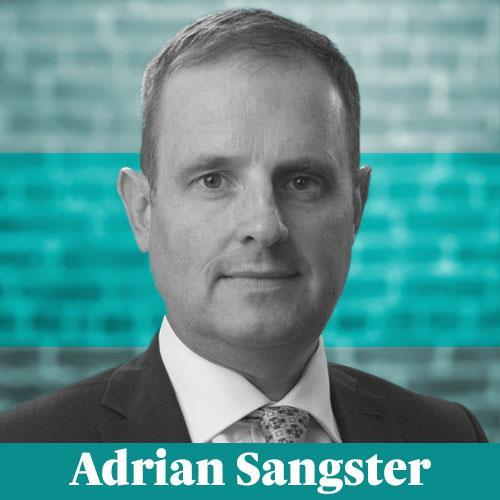
Adrian Sangster, leasing director of Aberdein Considine, summed the situation up as “daft” and called for proper action to be taken to rectify the issue.
“There’s about [8.1billion] worth of homes lying vacant throughout Scotland which seems a bit daft at the time when there is the demand out there and these homes are lying empty,” said Adrian.
“I understand that most of them are privately owned, so whether it’s local authority or government, I think there needs to be a bit more drive or investigation into why that’s the case and an effort to make them available for accommodation again – that would certainly help.”
The people that Adrian’s suggestion would help the most are those at the bottom of the property ladder – or those for whom the ladder has, ironically, been placed out of reach.
Aberdeen house prices: Scotland’s outlier
The story of Aberdeen and Aberdeenshire slightly differs from other locations around Scotland. The Granite City and Shire has experienced a steady decline in house and rent prices since the oil crash of 2014 – with the effects really starting to take hold the following year.
While the area has not witnessed the huge price soars of other areas since the pandemic, what the housing boom has done is seemingly stopped that property value rot.
Chris Comfort, estate agent at Aberdein Considine in Aberdeen, said that there has been a noticeable increase in the volume of sales of houses.
Comparing the company’s sales figures for 2021 against 2019, sales are up month on month. In Aberdeen and Aberdeenshire the number of houses sold has risen by between 10-15% for the first half of 2021 compared to 2019.
This influx in the number of houses being bought has stemmed the downward spiral of house prices.

Chris explained: “What was a downwards trend in Aberdeen on the average sale price – that slide has very much been arrested.
“If you can imagine a bell curve, the signs are there that we’ve reached the bottom of that bell curve and we are starting to go back up, albeit slowly and stably.”
The number of houses going to closing dates and selling above value has also risen since 2019.
“What we’re seeing now is that commuter areas are probably doing very well. Ellon, Stonehaven, Westhill, Kingswells are starting to see the rise again,” said Chris.
“I think Westhill and Kingswells are always interesting because based on the oil and gas downturn they were the first to experience it and also up there with the first to see the pick-up in the activity.”
Like other areas, there are signs that people are still choosing a lifestyle choice and trying to find homes with more outdoor space.
“The importance of having a garden we saw last year as being a high point of priority on a lot of people’s searches, to have that external space was very important.
“More latterly people have been looking at properties which have that additional space that can be used as an office.”
The need for bigger properties with more outdoor space is not confined to the selling market.
Adrian Sangster says there is a “severe shortage” of family-sized homes for rent due to demand.
He said: “We’ve had cases where we’ve put a property on and had 50 requests to view it within 24 hours of putting it on the market.
“I personally haven’t seen that level of interest, particularly in the north-east of Scotland, for these larger properties since the height of the oil boom.
“I’ve been doing this for over 30 years so I remember the heydays of the 90s and the letting market in the early 2000s and I would say even demand for that type of property – and the shortage of that type of property – is exceeding even those days.”
In recent times the lettings director has also seen a rise in people coming back to the north-east again, with oil companies again looking for accommodation for families coming from overseas.
The lettings director is also witnessing the same problems in Perthshire.
“The rental market in Perth is affected by a shortage of properties. There’s certainly demand there for the family-sized homes in more rural areas,” he said.
“It’s the same in Edinburgh and Glasgow, it seems to be the same applies to all the major cities at the moment and the areas surrounding them.
“When I refer to family homes it’s not always families that are taking them. It’s a couple but with the increase of home working they’re looking at needing a three bedroom, a bedroom for them a spare bedroom but also now a home office.”
“The bottom line”, said Adrian, “is that Scotland needs more family-sized homes.”
Better market for first time buyers
Another way that Aberdeen remains an outlier for property in Scotland is down to starter homes becoming more affordable since the oil crash.
While first time buyers have seen themselves priced out of the market in other cities, Aberdeen bucks that trend.
“It’s a much better first time buyer market in Aberdeen and they are who we saw last year when the market reopened after Covid,” said Chris.
“We saw first time buyers who had perhaps been living at home during Covid or renting.
“There was much more activity in that market, that want of getting their own space. You can imagine multiple generations of a family under one roof during lockdown conditions – it would focus your priorities – and it also allowed a lot of people an opportunity to save.”
That want from first time buyers to finally own their own property amid lockdown was laid bare when the Scottish Government’s £60 million First Home Fund, which lends applicants £25,000 towards their deposit, ran out of money after just eight days.
The fund had been cut down from £200 million the previous year.
The difference in Aberdeen housing prices compared to the rest of Scotland is also reflected in rental prices. Flats in the city centre which would have cost £900 – £1,000 per month pre-oil crash are now being rented out for a fraction of that.
Renting condition in Aberdeen means it took ‘two years to fix black mould’
With swathes of flats on the market and cheap prices, Aberdeen should be seen as a tenant’s paradise – but cheap rent comes with other problems.
Saoirse McIntee, a 24-year-old student renting in Kittybrewster, believes the cheaper priced accommodation means some landlords aren’t overly bothered about the state of the flats they let out.
“Aberdeen is a bit unique in that prices isn’t really the problem – it’s housing conditions,” said Saoirse.
“From my own situation, I lived in a flat on George Street in Aberdeen for two years and my rent never went up the whole time – but it took the landlord two years to fix black mould.
“They’re willing to charge not that much but they’re not willing to fix anything.”
The Aberdeen University student moved out of her problem flat a month ago and is still awaiting her deposit back, with the landlord threatening a reduction for cleaning.
“They’re still trying to hold onto it,” complained Saoirse.
“It was a month ago that I moved out and they’re still trying to wrangle money out of it. Because of a bit of dust on a few shelves they say they need a professional cleaner?
“I feel like I paid £287 a month for two years, and lived with mould for years, and because there’s dust I don’t get my full deposit back.
“Frankly I should be receiving compensation for living with mould for a year.”
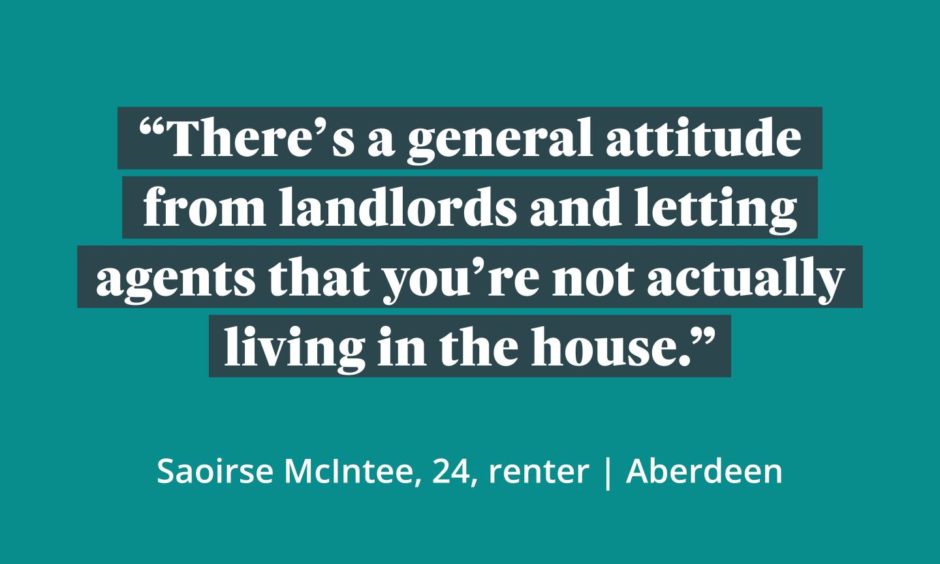
Need for a culture change in landlords
Saoirse believes there needs to be a culture change in the attitude of landlords towards their tenants. At 24, the student has no plans to buy any time soon so will be living in the sector for years to come.
“There’s a general attitude from landlords and letting agents that you’re not actually living in the house,” she said.
“Some of the minor damage that they pull up tenants on their deposits for – like people sticking stuff up on the wall – people live in these houses, they should be able to decorate their houses.
“It’s not just about landlords getting returns on their investment.
“The whole letting culture needs to realise that people need to live in these places, and I’m sceptical they ever will realise this.
“It’s not sustainable for people to be spending half their income on rent and you’re going to end up with generations of people who are impoverished the way that people two/three generations back weren’t because they’ve spent the best part of their life paying someone else’s mortgage.”
Originally from Edinburgh, Saoirse has no idea where she will end up living in the future. She doesn’t want to live in Aberdeen forever but fears she has already been priced out of a move back home.
“I’ve had it set that I’m never going to go back because the housing prices are going to go up and up.
“In Edinburgh people campaigned for rent pressure zones for years and after years and then Edinburgh council said they done some feasibility studies and it won’t work – well we need to find something that does work.”
Rent Pressure Zones
In late 2017, the Scottish Government brought in a new tenancy reform act which included the ability for local authorities to bring in Rent Pressure Zones that would stop huge rises in rent costs.
However to date no local authority has been successful in implementing a rent pressure zone. There is a belief that that the burden of proof is too high for local authorities and that the legislation is fundamentally flawed anyway.
The rent controls can only be applied to very small areas, almost on a street basis, and only while a tenant is in residence. This means that if a tenant leaves then the landlords can increase the rent for the next tenant. This in turn could lead landlords to try and use illegal methods to evict tenants in rent controlled areas.
Dan Wilson Craw of Generation Rent believes the rent control scheme isn’t functioning.
He said: “In Scotland there is rent pressure zones but no such zones has been set up so it’s clear that the policy isn’t working.
“I think it’s because the process for councils to apply for this is really difficult.”
“Landlords are still able to use informal pressure to push renters out,” Dan added.
“There’s a lot of problems making sure landlords aren’t evicting tenants illegally… by harassment, forcing tenants to move out using tactics like changing the locks while tenants are out, putting their belongings out on the street, cutting off utilities.
“That all counts as harassment. It’s more common among foreign nationals, people without good English, are certainly more vulnerable to that.”
The future of flats
One aspect of the housing market that hasn’t been affected the same way as houses is flats.
From Perth to Aberdeen and in Dundee as well, flats prices remain relatively low and in good stock.
A simple reason for this of course is the lifestyle change people have chosen to make during the pandemic.
James McKay, estate agent at Aberdein Considne in Perth, said: “There is still an oversupply of flats on the market so there’s not been a better time to buy a flat.
“Even at entry level, which in Perthshire is between £50k -£110k, there are properties available for first time buyers who would like to buy a flat.
“But like other areas of the market, first time buyers are naturally tending to want properties with front and back doors, garden and that offer a little bit of lifestyle as well and there’s a great shortage of them even at their level too.”
Renting in Dundee ‘a really desperate situation’
James Barrowman is a 25-year-old PhD student who has lived in Dundee for eight years, renting at least six different flats within that time period.
A self-confessed lover of Dundee, James’ father has lived there his whole life and the part-time lecturer and barista is writing his PhD on the literature of the City of Discovery.
But despite wanting to spend the rest of his life in the shadow of the Law, James fears he will be priced out of the city he loves.
As he sees new developments spring up around the Waterfront and gets excited about the Eden Project, any joy is tinged and dampened by the belief they will cause rent and house prices to spiral further upwards.
“For people like me who are renting and hoping to buy in a few years it is a really desperate situation,” explains James.
“It just feels like it’s going to escalate from here unless we tackle it. I’m very excited about the news surrounding the Eden Project and further development in the city, but I think it’s sort of inarguable that that will have a knock on effect for rents and the growth of short term lets.”
In a city once known for its affordable house prices, James doesn’t think it is realistic that he will be buying a house in the next five to 10 years, calling the prospect “pessimistic”.
“It feels like an impossible task,” he said.
“I think there’s a lot of that from people my age – people think it’s just not going to happen.
“It’s heart-breaking because not everyone wants to buy but most people will prefer it to renting.
“There’s a lot resentment because you’re paying a lot of money and getting nothing concrete from it.”
Millenials seeking home ownership are ‘priced out’
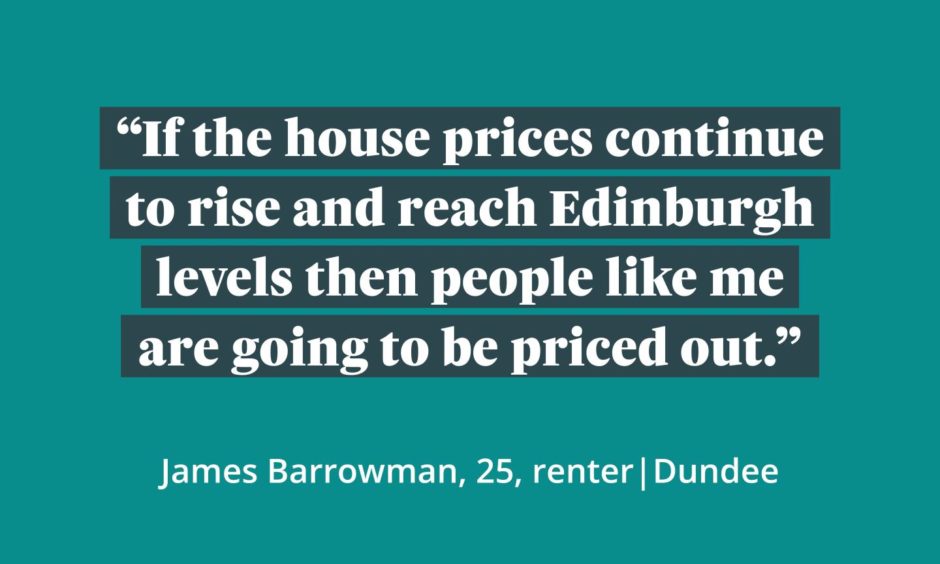
The PhD student believes that the situations witnessed in Glasgow and Edinburgh, where house and rent prices have skyrocketed in the last decade, should be seen as a “cautionary tale”.
James, who joined campaign group Living Rent during the pandemic, wants to see rent controls brought in and a limit to the amount of Airbnbs and holiday lets in the area.
He said: “I think with the redevelopment there’s been a lot of thought put into how do we improve Dundee and make it more attractive for people who want to come and live here, for people who want to visit here as tourists.
“But there’s not been the same thought given to those who are the residents, for the people that do live here to continue living here.
“If the house prices continue to rise and reach Edinburgh levels then people like me are going to be priced out.”
Poor conditions is also something that has affected James.
He said: “The man problem is damp that I have experienced.
“To give a personal example, in one of my old flats my flatmate actually had to move out because the damp was getting into her lungs and she was suffering from some pretty major health ramifications from it.
“The letting agent moved her out for a couple of months while they tried to dehumidify the room and even when she moved back in she still found it was a problem.
“Even when we moved out for that reason we’re still getting ludicrous amounts taken out of our deposits – even though one of our flatmates had been suffering some pretty major health problems because of the neglect of the flat.”
Data from Citylets shows a steady increase in Dundee rent prices from 2007 to the present, indicating that accommodation costs are continuing to rise in the city.
Thomas Ashdown, managing director of Citylets, explained: “Dundee is an interesting market.
“Rents are still relatively low in Dundee but there still is a very long, slow steady trend of upwards trajectory – it’s unmistakable.
“It’s something six or seven years ago you would have been laughed at, but on current trajectory Dundee will catch up with Aberdeen in a few years – and that is just absolutely unthinkable seven years ago.”
Despite the steady increase of rent prices in Dundee, Thomas doesn’t believe the supply and demand problems affecting Edinburgh were the reason for Dundee’s upwards trend.
Like James, Thomas believes rent prices have increased as Dundee is seen as a more desirable location.
“I think Dundee has been very balanced over all for the last decade which is why we get this steady picture but I think fundamentally the rents in Dundee reflect the overall trajectory of the city as becoming more of a destination city to live and work.
“Obviously there has been a lot of investment in the Waterfront and so on.
“But I don’t think there has been any extreme imbalance in supply and demand in Dundee.”
Perthshire property demand ‘unheard of’
The challenges for first time house buyers are being felt across rural areas with house prices in Perth and Kinross mainly going for above home report value.
James McKay, property seller at Aberdein Considine in Perth, said he had a lot of sympathy for buyers trying to come onto the market.
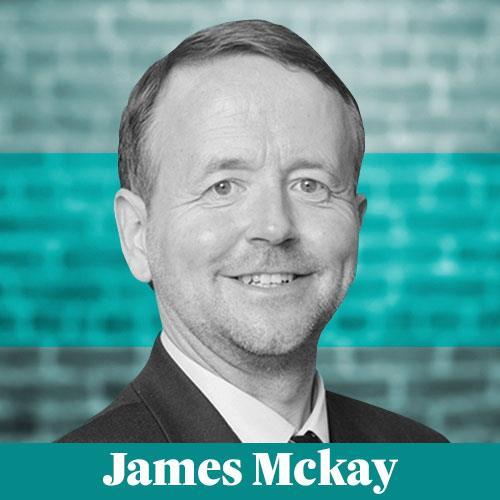
The branch manager told this investigation he had seen nothing like the current market in his whole career.
“Any house, from a two bed starter home for a first time buyer up to a large detached residence house, is generally getting offers in at or above home report valuation.
“And that is unheard of in my 27 years that I’ve been in the market.”
James believes that it is people who are making life changes since the pandemic that is driving this unique time in the property market.
The length to the pandemic property boom, which has been going strong for over a year now, outstrips other smaller booms in 2006/7 which were driven by lending fees and eventually led to the financial crash of 2008.
“At all levels of the market, from entry level first time buyer houses right up to the large detached residences in Perthshire, Pitlochry, Crieff – there’s definitely a demand for a home that’s going to offer you a home and a lifestyle,” said James.
“The lifestyle part is the outdoor lifestyle, for spending time with family in the garden or access to country walks and other attractions.
“People’s lifestyles have changed, they don’t need to work five days in the centre of Glasgow and Edinburgh.
“They can either work from home and live in a house north of Perth which is over an hour from the central belt and still be able to carry out their job or commute to the central belt once or twice a week and have a good work/life balance.
“That is really important to buyers now.”
People seeking more rural pastures amid Covid has brought many new faces to the market in Perthshire, causing an increase in house prices for locals.
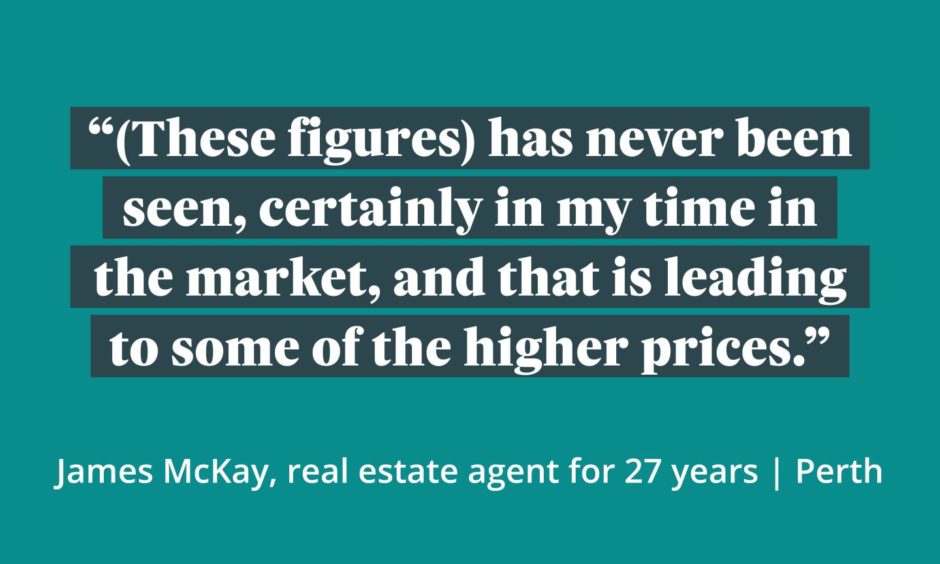
Before the pandemic, James thinks his viewings would have been around 50% from locals, either from Perthshire, Fife or parts of Dundee, with the other half from outwith that area. However since lockdown the estate agent claims that 75% of his viewings are from non-locals.
“There’s a clear difference in where the buyers are coming from – there are buyers wanting to come into Perthshire.
“(These figures) has never been seen, certainly in my time in the market and that is leading to some of the higher prices.
“These people are coming from more affluent areas of Scotland and the UK and are used to paying higher prices than is commonly being paid in Perthshire so that adds to automatic price inflation for Perthshire and shows that Perthshire is a location of choice for people.”
A continuation of this trend, while being positive news for those wishing to sell up in Perthshire, is bad news for potential first time buyers.
What the government say about first time buyers in Scotland
Shona Robison, cabinet secretary for housing, addressed a number of the concerns affecting tenants and first time buyers and the Scottish Government’s long-term strategy – Housing to 2040.
The SNP MSP for Dundee City East said: “Delivery of affordable housing is a priority for the Scottish Government. We want everyone to have access to a warm, safe, affordable and energy-efficient home that meets their needs, in a community they feel part of and proud of.
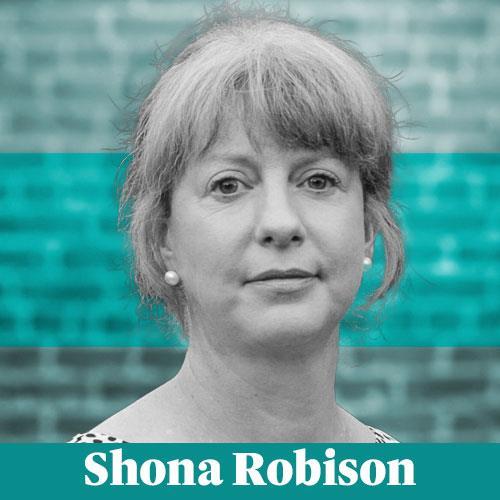
“Homes are so much more than bricks and mortar – providing access to good quality housing is a core part of our drive to secure economic growth, promote social justice, strengthen communities and tackle inequality.
“We recognise that delivering affordable homes in rural areas presents particular challenges which is why we have committed to developing a Remote, Rural and Island Action Plan to help ensure more homes are delivered for these areas.
“We have also set a target of delivering another 110,000 affordable homes by 2032, of which at least 70% will be for social rent and 10% will be in remote, rural and island communities.”
When asked what an affordable home meant in real terms, Ms Robison said the government was currently working on a “better definition of what an affordable home in Scotland is.”
The government minister also admitted there were problems with the current Rent Pressure Zone scheme and said plans were underway into overhauling the system.
Edinburgh City Council told this investigation that when they looked at implementing the scheme in 2018 they believed they would need to have up to needed to provide five years’ worth of data to get the pressure zone brought into practice.
Ms Robinson: “Data is still going to be an issue and we will need to be able to provide enough data on rent levels in the private sector in order to move forward with that, so that’s something we’re going to be giving a lot of thought to in terms of how do we collect that information because we would need that information to be able to assess whether rents were affordable or not affordable.
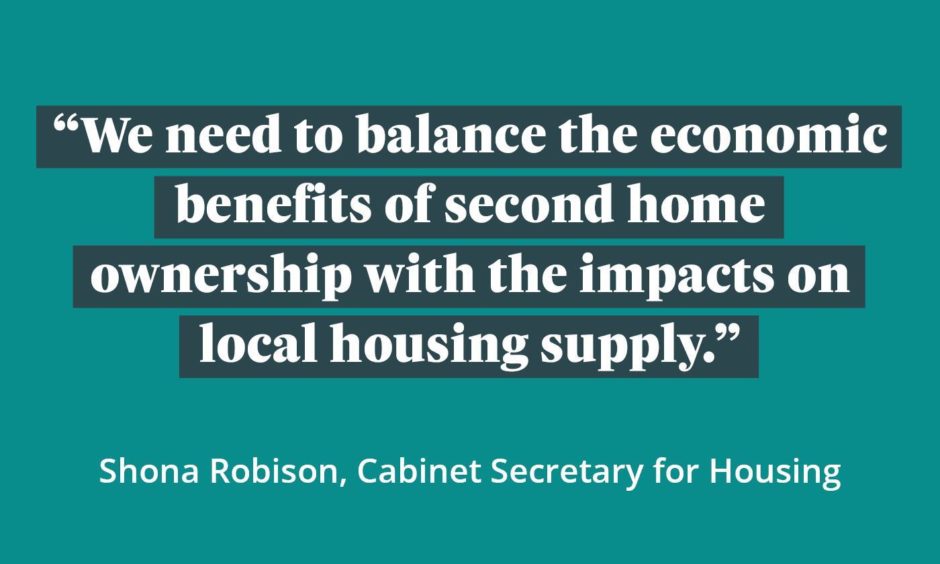
Local authorities “should be able to make decisions” on rent prices
“It’s definitely been an issue and moving forward we’re definitely going to have to address that in order to get a system that’s workable and useable in the right way.”
Ms Robison believes a key element to any new scheme will be flexibility. Instead of having a broad national framework, local authorities should be able to make decisions which best reflect the rent price issues in their areas.
This investigation also raised the issues of second homes, vacant properties and holiday lets with the cabinet secretary.
Ms Robison said: “We are also aware of growing concerns about the potential negative effects of concentrations of second homes.
“We need to balance the economic benefits of second home ownership with the impacts on local housing supply.
“Local authorities have the option to remove the second homes council tax discount, and our Additional Dwelling Supplement can help to discourage people from buying second homes.
“Our agreement with the Scottish Green Party includes measures to regulate short-term lets, enable local authorities to manage the impact of second homes, and bring empty homes back into use – into the social rented sector where possible.
“We continue to invest in the Scottish Empty Homes Partnership and our network of empty homes officers, and are pleased to note that Highland Council has hired one such officer.”
If you are experiencing housing issues or would like to discuss your situation with someone please contact:
If you would like to speak to our Impact investigations reporter Sean O’Neil please email soneil@dctmedia.co.uk
Credits
- Words by Sean O’Neil
- Data visualisations by Lesley-Anne Kelly, Joely Santa Cruz and Emma Morrice
- Graphics by Clarke Cooper
- Photographs by Mhairi Edwards, Jason Hedges and Kami Thomson
- Design by Cheryl Livingstone
More investigations from our Impact team:

Read ‘Neo-Nazis in Our Midst‘ Investigation.
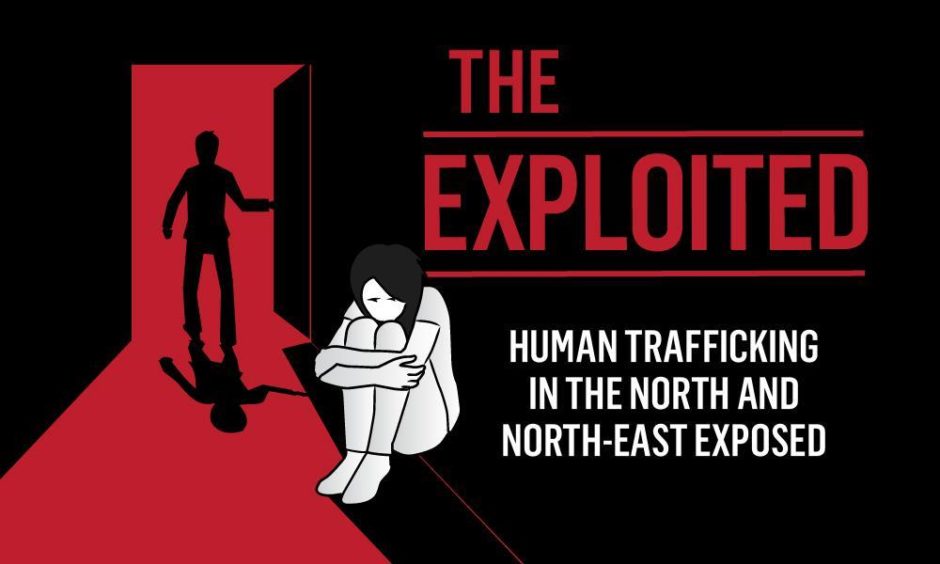
Read ‘The Exploited – Human Trafficking in the North and North-East Exposed‘

